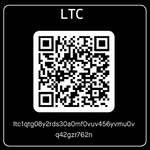CEO-eco: Kevin Czinger, President & CEO
CODA Automotive.
Education: Law degree. Yale. Studies Science and Chinese language. Techy.
Tracks: Electrification Coalition. Fortress Private Equity. Former Assistant US Attorney. Global Signal. Volcano Records.
Traits: Pragmatic. Ingenuity. Driven. Tenacity. Leader. Athletic.
Impression: Innovator. Loves Life. Voracious. Prolific. Passionate
Interviewed by Charlene Brown
The CODA sedan - not a new model, rather, a new technology, a real all-electric car – not a prototype.
A small innovative team in Santa Monica, California, is transforming the electric vehicle industry by creating a purpose-built, automotive grade, long-range lithium-ion battery system. With this technology, CODA is putting an affordable electric car into the hands of the consumer who is the real driver of innovation. The vehicle is due out in California in the fourth quarter of this year.
CODA – Brain Power
To get serious about building electric cars you would take a clean sheet of paper and start from scratch.
First you come up with the vehicle requirement – people need an average sized vehicle with comfortable seats and trunk space, one that gets a reliable range on a full charge, and one that sells at a reasonable price. Next you determine how much energy is required, and then the modeling and packaging exercise of putting together mass aerodynamics-rolling requirements.
Do you now run around to find microelectronic batteries to piece together and power the car? No, because it won’t perform. The objective is to create a purpose-built automobile with an advanced battery and thermal management system. A configuration that would allow a driver in Minnesota to use the car in the dead of winter, or a driver in Palm Desert in the heat of summer.
Next you organize a brilliant and diligent team working around the clock to transform the electric car from a dream to a reality.
CODA’s team is made up of a broad range of experience and expertise. First is Phil Gow, vice president of Battery Systems. Phil has 17 years experience focusing on the development of advanced battery systems and owns nine battery patents. Phil spent many years working with General Motors on the belated EV1 project.
Second is Broc TenHouten, CODA’s Senior Vice President of Engineering & Project Management. Broc and his core team engineered and developed a safe and affordable all-electric vehicle quicker than the automotive giants with their thousands of engineers.
Third is Bruce Shibuya, Chief Quality Officer. Bruce is the man behind Hyundai’s unprecedented quality improvements and joined CODA to lead its manufacturing efforts and redesign the customer service infrastructure.
CODA – Battery Power
Fifteen years ago, the best electric car battery option included led-acid batteries that weighed an absurd amount with only a low energy density. Later, Toyota put a nickel-metal-hydride battery in the RAV 4 EV, but still there remained an energy deficiency. Lithium-ion battery systems solved the energy and weight problems, but Toyota only used low precision manufactured microelectronics that failed to function in a systematic way.
To date, CODA has raised more than $125 million from a mix of private and institutional investors. This allotment of funds has allowed the company to take the key enabling technology and the battery system to mass production.
The CODA battery pack is a lithium-ion iron phosphate 700lb-728-cell battery system. Each system stores 33.8 kWh of energy at 333 volts. The packs are situated underneath the car for a low center of gravity – as opposed to other EVs that consume trunk space with batteries that weigh hundreds of pounds. As a new American car company, instead of spending millions in metal bashing, CODA focused on battery intelligence and innovation.
Porsche Design Studios helped CODA design the car that uses components supplied by U.S. manufacturers such as BorgWarner, Delphi, Nexteer and UQM Technologies. The engineers modified a Mitsubishi-licensed chassis and thoroughly re-engineered and re-designed it. In the end, the CODA sedan is a four-door, four-passenger fully loaded affordable, all electric, zero emissions car with more trunk space than an average mid-size vehicle.
The first wave of CODA cars will be available in 2011 at a sticker price in the $30K-$35K range after Federal and State incentives, that of an average mid-size sedan. The only other regular cost is about $2.50 per full electric charge at $0.08 per kWh, based on Southern California Edison’s nighttime electricity rate. And with a 220V (30AMP) outlet the car takes under six hours to fully charge. So, for less than the cost of one gallon of gas you can drive for 90-120 miles.
The on-board Green-Screen monitors driving efficiency and comes equipped with a standard navigation system. Also, roadside and emergency assistance is just the push of a button away. Not to mention included in the vehicle are the Bluetooth system, satellite radio, and media connectivity.
CODA – A Balanced Ecosystem
The evidence of CODA’s intelligence is the battery system. The battery module houses sensors and micro chips which monitor and control each individual cell from a charge and discharge standpoint. If careful attention to the battery system is practiced, it will function as a well-balanced ecosystem.
Take the human body for example, even when we are asleep our brains are still active; cells actively work to maintain oxygen levels. So it is with the CODA operating system, when it is off, the car is still thinking. A set of algorithms and formulas in the battery system detect climatic conditions and sustain the car in a state of optimal health. If sensors detect a chill coming, the cells instruct the car to heat the battery system. Unless a battery system has this kind of detailed intelligence, the battery’s lifespan will decrease substantially.
At our core, we are focused exclusively on green technology – one hundred percent of what we do is green technology. After 100,000 miles, CODA’s battery can be repurposed as an intermittent storage device for wind and solar energy.
What does this all mean? Today, we have a chance to catalyze a movement of positive energy. Change happens at the grassroots level, if the people lead, then leaders will follow.
On a macro scale, legislative mandates for cleaner cars and a cleaner environment have merits. Environmental degradation does have economic impact. People get injured and sick and the environment is harmed – these are real factors.
Is it therefore rational that the price of a product reflects damages? Absolutely! Can we discern the real analytics of what that cost is or the depth of the impact? No we can’t. At CODA, their focus is centered on getting a clean, safe, reliable car in the hands of real people. Those folks will tell the story and that in turn will drive change.
CODA – Driving American Manufacturing
CODA recently announced plans to build a battery system manufacturing facility in Ohio. Construction is contingent on approval of an Advanced Technology Vehicles Manufacturing Loan from the Department of Energy. The plant will put thousands of people back to work once it is built.
Electric cars will fundamentally change the economics of the automotive industry. My belief is that electrification will shift money back into the hands of consumers. CODA is a musical term that designates the conclusion of one passage and the beginning of a new one. And that’s just what CODA’s technology does.





